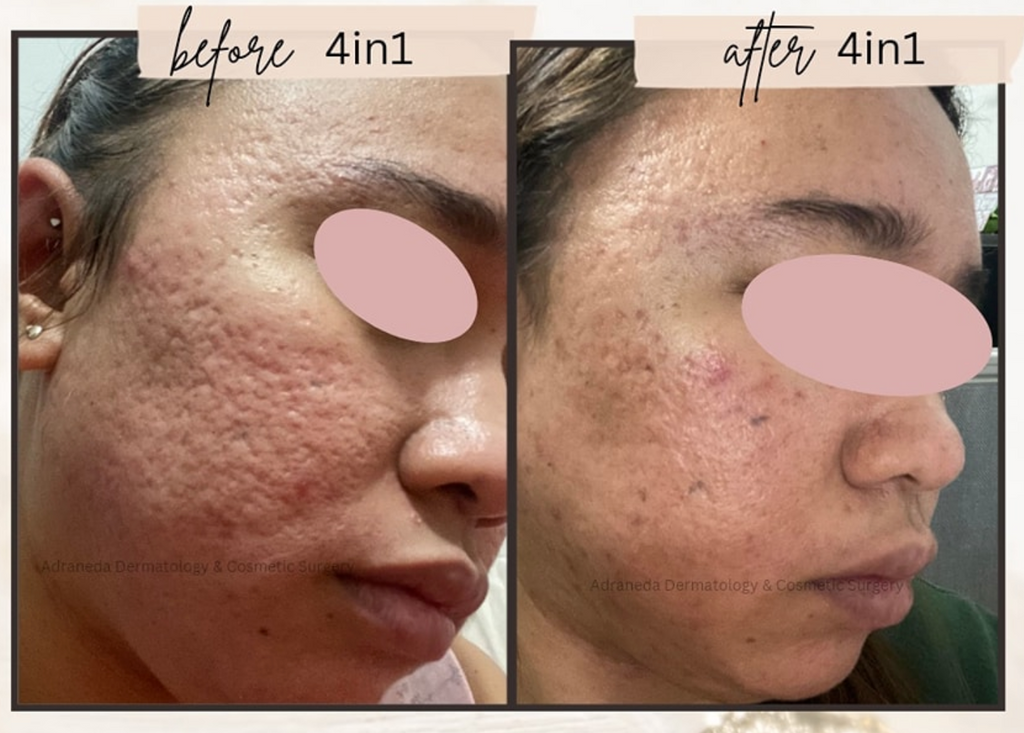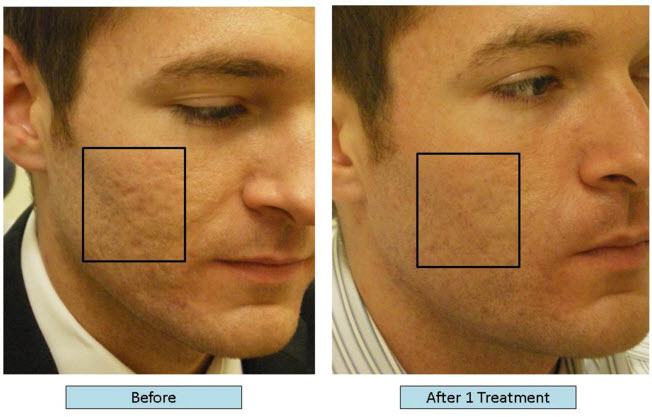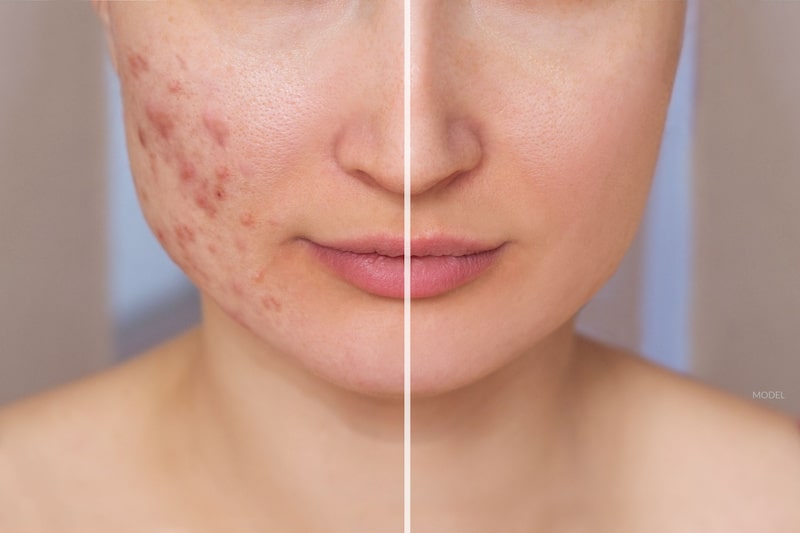Understanding the Various Skin Disease and Efficient Treatment Choices for Acne Scars
Acne scars represent a complicated interplay of skin conditions that considerably effect people' self-confidence and general skin wellness. Recognizing the distinctive types of acne marks-- atrophic and hypertrophic-- alongside their underlying causes, is crucial for determining reliable therapy approaches. Numerous healing alternatives exist, varying from sophisticated dermatological procedures to natural remedies. Nonetheless, the efficacy of these treatments commonly depends upon individualized evaluations by qualified experts. As we explore the landscape of acne scar monitoring, it comes to be obvious that the journey towards more clear skin may entail even more than just topical solutions.
Types of Acne Marks
The two main categories of acne marks are atrophic and hypertrophic marks. These marks are further categorized into 3 subtypes: ice choice scars, which are deep and narrow; boxcar marks, which are wider and have well-defined edges; and rolling scars, which produce a wave-like look due to uneven skin texture.
In contrast, hypertrophic marks arise from an overflow of collagen throughout the recovery process, resulting in increased locations on the skin. These marks are frequently solid and can vary in color, often showing up red or darker than the bordering skin.

Root Causes Of Acne Scarring
Marking happens as a result of the body's natural recovery feedback to swelling and injury triggered by acne lesions. When acne forms, it triggers an inflammatory feedback, bring about the launch of different cytokines and growth factors that advertise recovery. This procedure can often lead to extreme tissue formation or poor fixing, resulting in scars.
The primary reasons for acne scarring include the seriousness of the acne itself, period of the sores, and private skin types. Severe inflammatory acne, such as cysts and blemishes, is most likely to lead to scarring due to deeper cells damage. Additionally, improper handling of acne sores, such as selecting or squeezing, can exacerbate cells injury and inflammation, increasing the possibility of scarring.
Genetic predisposition additionally plays a significant role; people with a household history of scarring are at a higher risk. Furthermore, skin type and shade can influence mark development, as darker complexion might experience post-inflammatory hyperpigmentation, while lighter skin may create atrophic scars.

Therapy Options for Scarring
Effective therapy choices for acne scarring vary depending upon the kind and seriousness of the scars. Generally categorized into atrophic, hypertrophic, and keloid marks, these problems need tailored methods for optimal results.
For atrophic marks, which are identified by a loss of cells, treatments such as chemical peels, microdermabrasion, and laser therapy are commonly used. These techniques promote skin renewal and boost collagen manufacturing, consequently enhancing skin texture. Subcision, a minimally intrusive treatment, can also be effective by separating coarse bands below the skin.
Hypertrophic and keloid scars can be extra challenging to treat. Alternatives consist of corticosteroid injections to reduce swelling and squash the scars. acne scars. In some instances, cryotherapy or laser therapy may be advised to decrease their appearance
Surgical options are readily available for extreme scarring, where excision or skin grafting may be required. It's important for people to seek advice from a skin specialist to assess their details scar kind and go over the most ideal check these guys out therapy plan. Incorporating several therapies usually produces the best results, guaranteeing that each person's special skin disease is addressed properly.
Home Treatments and All-natural Solutions
All-natural solutions and natural home remedy can give an easily accessible method for individuals looking for to improve the look of acne scars. Different ingredients discovered in the home kitchen area have actually shown prospective benefits in boosting skin texture and advertising healing.
One prominent solution is aloe vera, known for its comforting and anti-inflammatory homes. Using fresh aloe vera gel straight onto the scars can assist boost skin hydration and decrease redness. Likewise, honey has natural antibacterial and moisturizing high qualities that can assist in mark healing. It can be used as a mask, left on for thirty minutes before rinsing.
Another effective option is lemon juice, which serves as a natural exfoliant and can lighten hyperpigmentation. Nonetheless, it needs to be made use of very carefully, as it may trigger photosensitivity. Oatmeal masks are additionally valuable; their mild peeling can aid get rid of dead skin cells while comforting irritability.
Necessary oils, such as tea tree oil and lavender oil, can better sustain mark recovery as a result of their antimicrobial residential or commercial properties. It is important to carry out a patch test before using any kind of treatment to make sure there are no negative responses. These natural services can be a complementary approach in the journey to reduce acne marks.
Stopping Future Scarring
Taking on an aggressive approach to skin care can significantly lower the danger of creating future acne scars. Normal cleansing, exfoliation, and hydration can aid maintain skin health and wellness and protect against blocked pores.
In addition, staying clear of the temptation to choose or press acne lesions is vital, as this can lead to inflammation and subsequent scarring. Rather, people should focus on applying topical therapies that advertise recovery and reduce inflammation. Components such as salicylic acid, benzoyl peroxide, and retinoids are recognized for their efficiency in managing acne and reducing scars.

Finally, keeping a healthy diet rich in antioxidants and remaining moisturized assistances skin regrowth. By implementing these precautionary actions, people can significantly lower their danger of future scarring and promote general skin wellness.
Conclusion
To conclude, a detailed understanding of acne marks, incorporating both hypertrophic and atrophic kinds, is essential for effective treatment strategies. Tailored interventions, including professional treatments and natural home remedy, can considerably improve basics skin appearance and structure. Precautionary steps likewise play a vital function in lessening future scarring. Appointment with a skin doctor stays critical to design tailored strategies that take into consideration specific skin types and scar severity, inevitably boosting the effectiveness of scar management strategies.
Acne marks represent a complex interaction of skin conditions that substantially effect individuals' self-worth and total skin health and wellness. The 2 key categories of acne marks are hypertrophic and atrophic scars. These marks are additional classified into 3 subtypes: ice pick marks, which are deep and narrow; boxcar scars, which are broader and have well-defined sides; and rolling scars, which develop a wave-like look due to uneven skin appearance.
An extensive consultation with a skin specialist can aid identify the most ideal intervention, taking right into account the individual's skin kind, mark intensity, and overall skin health and wellness.
Consultation with a skin doctor remains essential image source to create tailored methods that think about specific skin types and scar extent, ultimately improving the effectiveness of mark management methods.